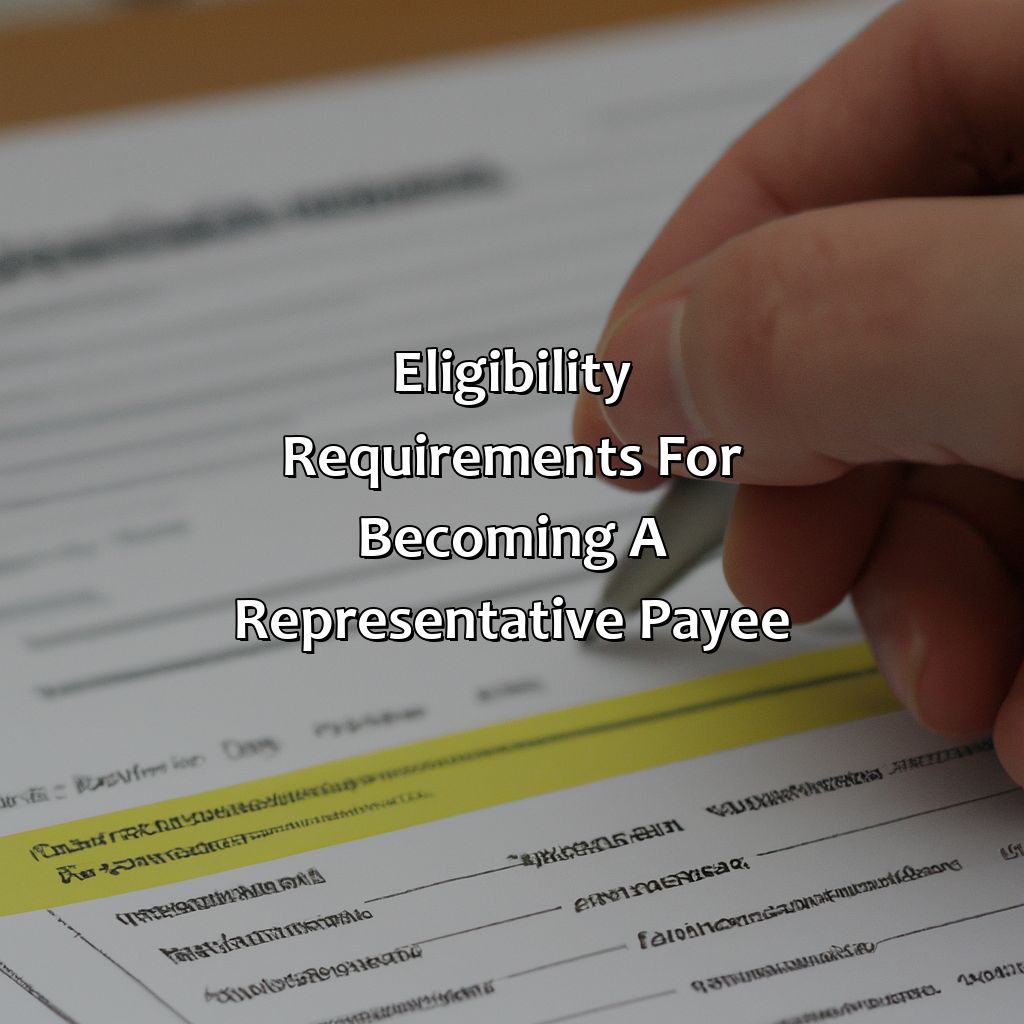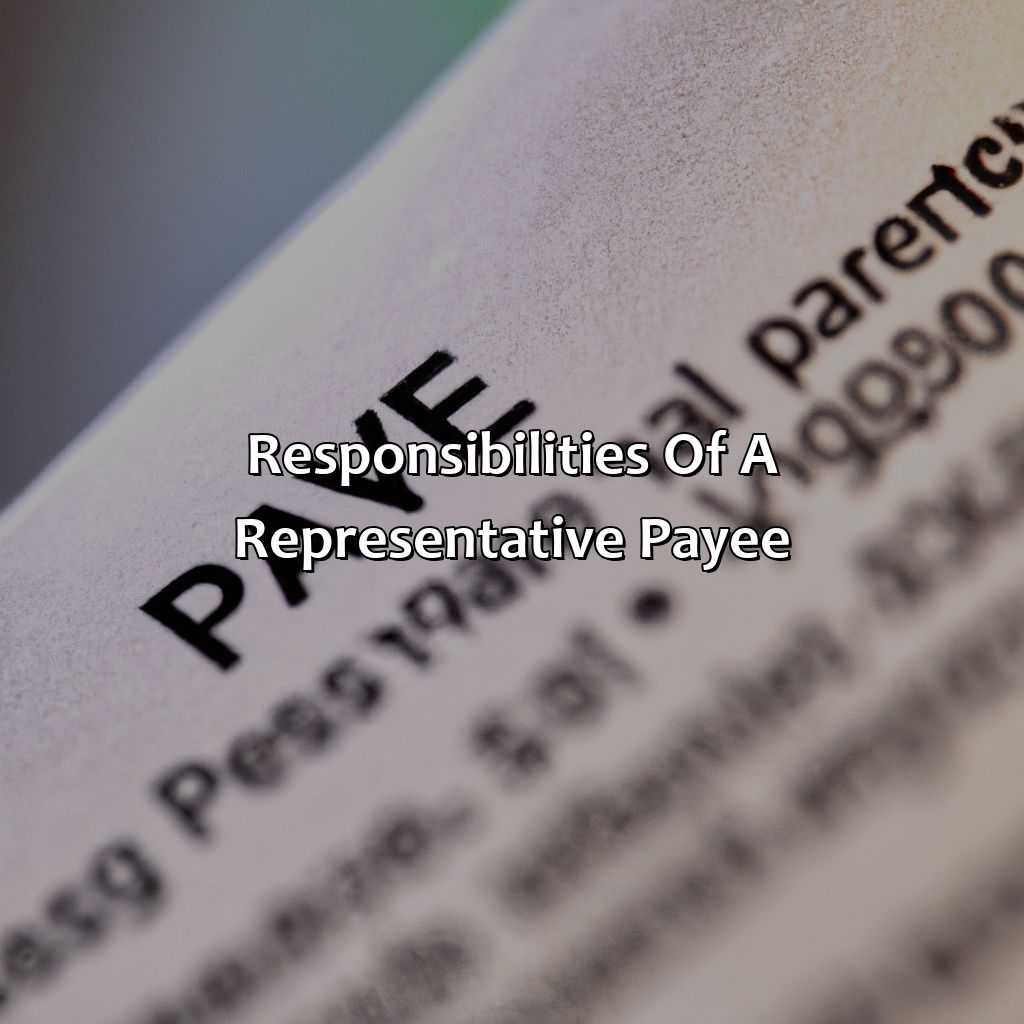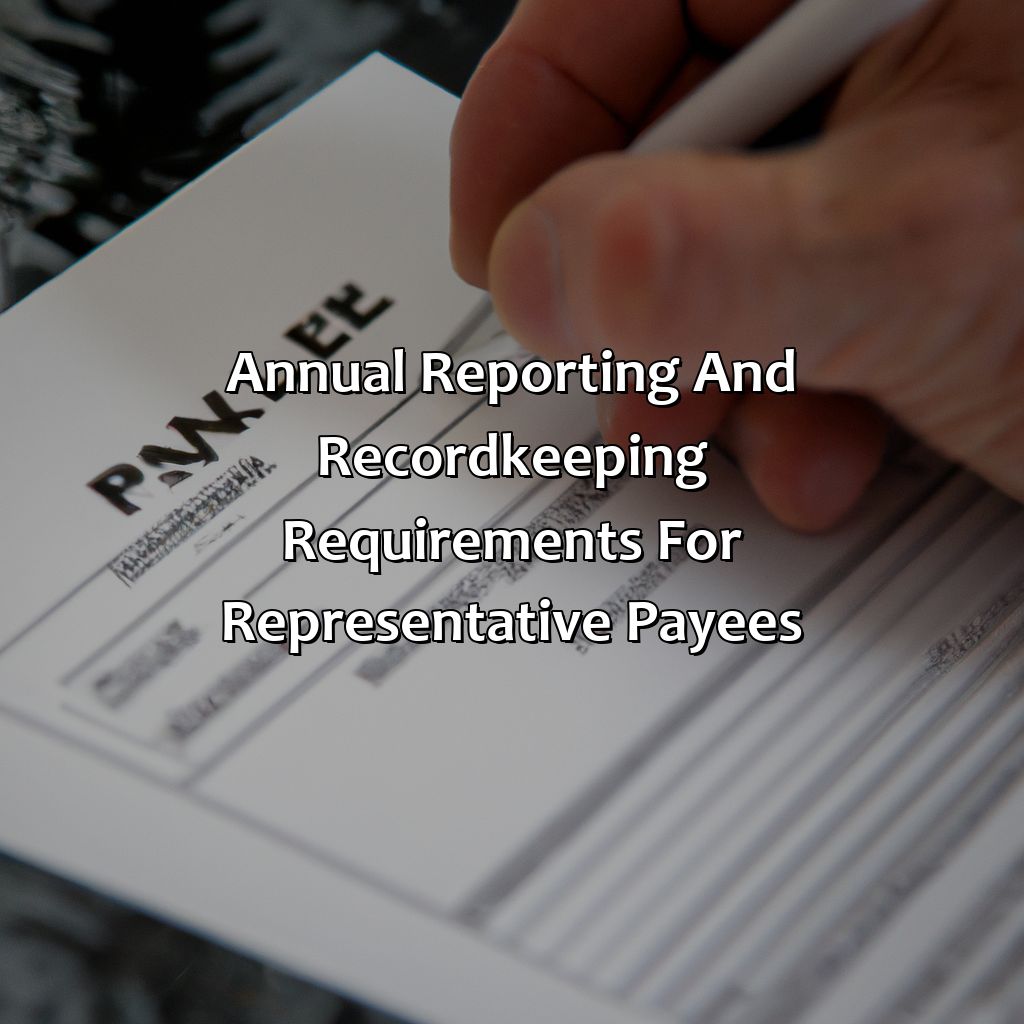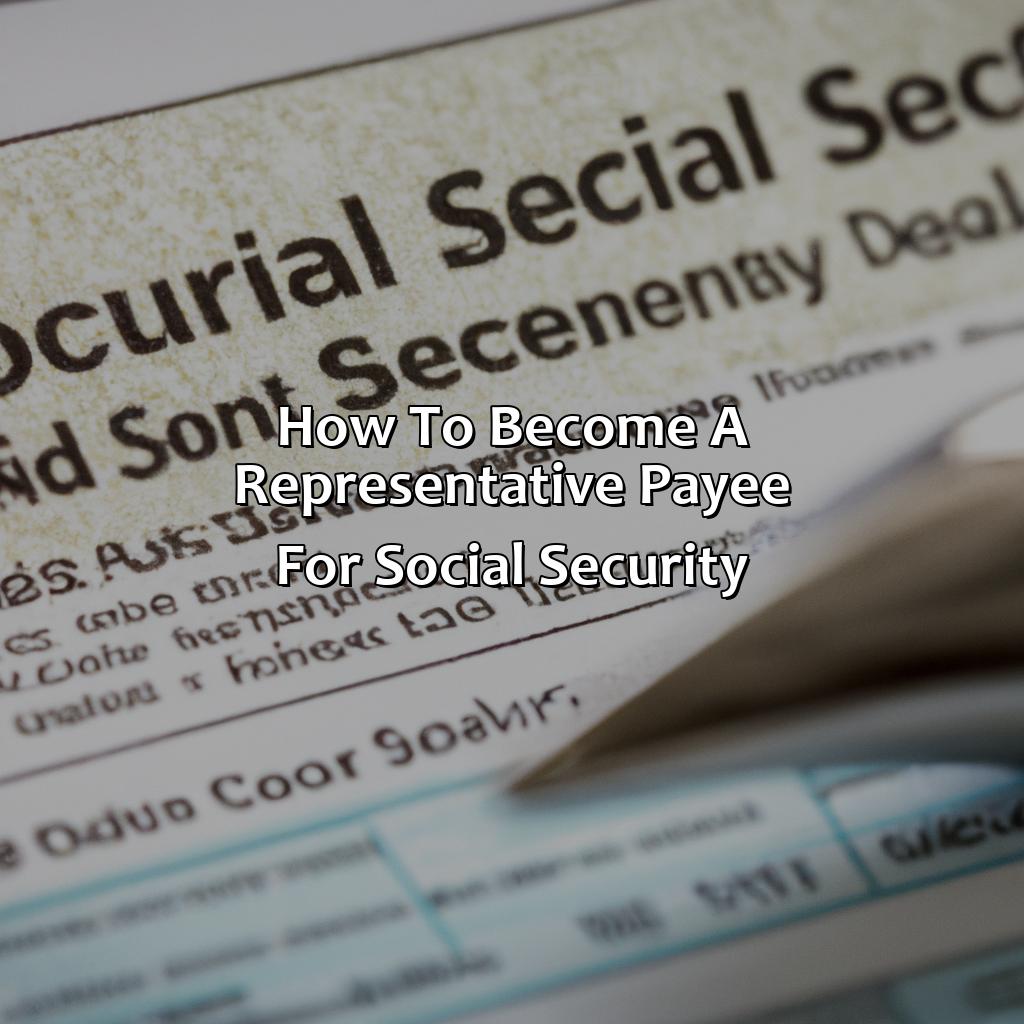How To Become A Representative Payee For Social Security?
Key Takeaway:
- The Representative Payee Program enables individuals to manage Social Security benefits on behalf of beneficiaries who are incapable of managing their own finances due to physical or mental limitations.
- To become a representative payee, an individual must meet certain eligibility requirements, including passing a background check and providing proof of identity and financial stability.
- The application process for becoming a representative payee involves submitting required documentation and waiting for approval, which can take up to several months. Once approved, the representative payee must fulfill their responsibilities of managing the beneficiary’s benefits and reporting any changes in their circumstances to the Social Security Administration.
Have you ever thought of becoming a payee who can help manage financial needs of a loved one? This article will guide you on the process to become a representative payee for social security. You will learn all the steps needed to apply and receive an approval.
Overview of Representative Payee Program
To understand the Representative Payee Program, one needs to acquaint themselves with the program’s nuances. As a Social Security Administration program, it caters to beneficiaries who are not capable of managing their finances due to mental or physical disabilities. Such beneficiaries require the help of a representative payee to assist them in meeting their basic needs, such as food, clothing, and shelter. This program provides crucial support to those who require it, ensuring that they are financially secure and receive necessary care.
The process of becoming a representative payee for social security is relatively simple yet crucial. First, an interested individual must complete an application from their local Social Security office or online. The application requires relevant details about the individual and other details that help determine their eligibility. Once approved, the representative payee must monitor the beneficiary’s finances, make necessary payments and report to Social Security Administration.
It’s essential to understand that the representative payee’s job is to act on the beneficiary’s behalf and ensure that their finances are appropriately managed. They must not use the beneficiary’s funds for their personal use under any circumstances. In addition, representative payees can face legal repercussions if they misuse the beneficiary’s funds.
The Representative Payee Program had its origins dating back to the early 1900s, when beneficiaries’ relatives or friends would manage their finances. However, the Federal government institutionalized the program in 1935 as a part of the Social Security Act. While the program has undergone various changes over the years, the core aspect of providing financial support for those who require it remains the same.

Image credits: retiregenz.com by Adam Arnold
Eligibility requirements for becoming a representative payee
To become a representative payee for Social Security, certain eligibility requirements must be met. These include being at least 18 years old, having no criminal record, having a good credit history, and being able to manage finances responsibly. Additionally, the payee must have a close relationship with the beneficiary and be willing to act in their best interest.
It is important to note that the Social Security Administration (SSA) may also require the payee to undergo an interview and provide personal information and references. The SSA will also conduct annual reviews to ensure that the payee is fulfilling their responsibilities appropriately.
To increase the likelihood of being approved as a representative payee, it is recommended to have a strong understanding of the responsibilities and requirements of the role. It may also be beneficial to have experience managing finances or caring for someone who is unable to manage their own finances.
Overall, becoming a representative payee for Social Security involves meeting specific eligibility requirements, undergoing an application process, and fulfilling important responsibilities in managing the finances of a beneficiary.

Image credits: retiregenz.com by Adam Jones
Application process for becoming a representative payee
You can become a social security representative payee! However, to do so, you must follow the application process and provide the necessary documentation. How long it takes to get approved and appointed will depend on the situation.

Image credits: retiregenz.com by Harry Arnold
Required documentation for the application
For the purpose of becoming a representative payee for Social Security, certain documents are required to be submitted during the application process. These documents would help in verifying your identity, establishing your relationship with the beneficiary and validating your financial condition.
- Proof of Identity: You need to provide government-issued identification cards such as a driver’s license, passport, or state ID.
- Proof of Relationship: Proof of relationship is necessary when you are applying on behalf of someone else. Documents like birth certificates, marriage certificates, guardianship papers can be used to establish your relationship with the beneficiary.
- Financial Documents: Lastly, the financial statement would be required for you to show yearly account reporting expenses and income. If there is any change in your financial situation after receiving access to SSA funds then it must be reported immediately.
Along with these basic requirements for being a representative payee for Social Security, financial institutions have their own protocols that must also be followed.
Each payee application is scrutinized thoroughly because this responsibility involves managing someone’s finances. It’s essential to provide accurate information from all concerned parties that pertain to the application thus reducing delay time tremendously.
A common issue arising with having legal representative rights is knowing where responsibilities end concerning self-interest and the role as a representative beginning. For instance, some people have been known to steal from beneficiaries and overdraft accounts due to poor personal finance practices previously established ones.
In recent times digitizing documentations has brought less strain but also concerns over data safety issues that may result in identity theft or fraud. Thus while digitization helps us save time on documentation it does come with risks involved too.
Having proper information about legal representation rights can allow one greater trustworthiness from the Family members alongside banks supporting them into further social services provision even beyond Social Security benefits payments security provided by especially authentic representatives.
Because becoming a representative payee takes longer than watching paint dry, here’s the time frame for approval and appointment:
Time frame for approval and appointment
The process of getting approved and appointed as a representative payee for social security can take anywhere from a few weeks to several months. The length of time depends on the complexity of the applicant’s case and how quickly they are able to gather all necessary documentation.
During this time, applicants should stay in contact with their local Social Security Administration (SSA) office and keep them updated on any changes or updates to their case. It is also important for the applicant to respond promptly if additional information is requested by the SSA.
Once approved and appointed, the representative payee will be responsible for managing the beneficiary’s finances and ensuring that their basic needs are met. This includes paying bills, making sure they have adequate food and shelter, and managing any additional funds allocated for medical or other necessary expenses.
It is essential for those interested in becoming a representative payee to understand the requirements and responsibilities involved in this role before applying. They must also be prepared to undergo a background screening process and comply with strict reporting requirements.
If you believe you qualify to become a representative payee, it is important not to delay your application as you may risk missing out on critical benefits and financial support. Take action today by contacting your local SSA office or visiting their website for more information on how to get started.
Being a representative payee means you get to handle other people’s money and feel like a responsible adult, until you accidentally spend it all at the fancy coffee shop.
Responsibilities of a representative payee
Be a representative payee for Social Security? Focus on managing benefits for the beneficiary. Report any changes to the Social Security Administration. Do this and you’ve fulfilled your obligation. Utilize the benefits optimally. Keep the SSA updated with info.

Image credits: retiregenz.com by Joel Arnold
Managing Social Security benefits on behalf of the beneficiary
Managing Social Security Benefits on Behalf of the Beneficiary
As a representative payee, managing Social Security benefits for beneficiaries requires responsibility and accountability. This involves making sure funds are allocated appropriately to meet their financial needs, following Social Security Administration (SSA) guidelines, and reporting timely updates to the agency.
To ensure smooth management of SSA benefits, representatives must begin by completing an application process with the agency. Once appointed as a payee, they must create and maintain detailed records of all beneficiary expenses, prepare annual reports summarizing these expenditures and update the agency promptly about any changes in beneficiary circumstances.
It’s important to note that representatives can’t use beneficiary funds for personal purposes. Instead, they must prioritize disbursement towards basic needs like housing, medical expenses, food, clothing etc. Prioritizing spending towards necessities will ensure that the beneficiary’s lifestyle is neither compromised nor threatened.
Don’t forget to update Social Security when your beneficiary starts pulling a Kanye and changes their name to something like ‘Yeezus Christ Superstar.’
Reporting changes in beneficiary’s circumstances to Social Security Administration
A representative payee must inform the Social Security Administration of any changes in the beneficiary’s situation that may affect their eligibility for benefits. These changes can include changes in living arrangements, income, and resources. It is important to report these changes as soon as possible to ensure that the beneficiary receives the appropriate amount of benefits.
The reporting process involves completing a Representative Payee Report form provided by the Social Security Administration. The form requires details such as the beneficiary’s current living situation, income, and expenses. The representative payee must also provide supporting documents such as rent receipts or bank statements.
It is essential to keep accurate records of all changes as failure to report them can lead to overpayments or underpayments. The Social Security Administration conducts periodic reviews of representative payees’ performance in fulfilling their duties.
Reporting changes in circumstances must be done promptly and accurately so that the beneficiary can receive timely payments and avoid financial hardship.
A common mistake made by some representative payees is not reporting events such as a change of address, assuming it may not affect benefit payments. However, any significant change should still be reported immediately to avoid interruptions in payments or potential fraud attempts on social security accounts.
Keeping track of your finances as a representative payee may be tedious, but at least it’s not as mind-numbing as watching paint dry.
Annual reporting and record-keeping requirements for representative payees
Representative payees are required to report to the Social Security Administration (SSA) annually and maintain accurate records of all transactions. This includes keeping receipts and bank statements. Failure to comply with these requirements may result in penalties and even revocation of the payee status. The SSA may also conduct periodic reviews of payees’ records to ensure compliance and protect the beneficiaries’ interests. It is crucial for payees to stay organized and keep detailed records of all transactions to meet these reporting and record-keeping requirements.
In addition to the annual reporting and record-keeping requirements, representative payees must also notify the SSA of any changes in the beneficiary’s circumstances, such as a change in living arrangements or income. It is important that payees promptly report any changes to avoid potential overpayments or underpayments to the beneficiary. Failure to report changes could also result in penalties or even criminal charges.
It’s worth noting that according to a report by the SSA Office of the Inspector General, there were over 20,000 cases of representative payee misuse in 2019 alone. As a result, it’s essential for those considering becoming a representative payee to understand the significant responsibility and accountability that comes with the role.

Image credits: retiregenz.com by David Duncun
Removal of a representative payee
In situations where a representative payee is no longer able to fulfill their duties, the Social Security Administration may take steps to remove them from their position. This could happen if the payee is found to be misusing funds, neglecting the beneficiary’s needs, or unable to provide the necessary services. To start the process, the beneficiary or another interested party should contact the local Social Security office and provide evidence of the payee’s inadequacy. The office will then investigate the matter and take appropriate action.
It’s important to note that removal of a representative payee is not a decision that is taken lightly and may take some time to resolve. During this period, the beneficiary’s needs must be met, and they may be issued an interim payee until a new suitable payee is found.
Pro Tip: If you are a representative payee and feel overwhelmed or unable to keep up with the duties, it’s best to contact the Social Security office and discuss the situation instead of waiting for the removal process. They may be able to provide resources or make alternative arrangements to ensure the beneficiary’s needs are met.

Image credits: retiregenz.com by James Woodhock
Some Facts About How To Become a Representative Payee for Social Security:
To become a representative payee for Social Security, you must apply with the Social Security Administration (SSA) and complete an application. (Source: SSA)
The application requires information about the person you will be representing, as well as information about yourself. (Source: SSA)
SSA may require a face-to-face interview before approving your application to become a representative payee. (Source: SSA)
As a representative payee, you will be responsible for managing Social Security benefits on behalf of the beneficiary. (Source: SSA)
You must use the benefits for the sole benefit of the beneficiary and keep accurate records and receipts of all transactions. (Source: SSA)
FAQs about How To Become A Representative Payee For Social Security?
How can I become a representative payee for social security?
To become a representative payee for social security, you must apply to the Social Security Administration (SSA) and meet their requirements. You can submit an application online, over the phone, or in person at your local SSA office.
What are the requirements to become a representative payee?
To become a representative payee, you must be at least 18 years old, have no felony convictions, be willing to undergo a background check, and be able to manage the beneficiary’s finances in their best interests. You must also have a good credit score and be able to keep accurate records.
Can I become a representative payee for a family member?
Yes, you can become a representative payee for a family member if they are unable to manage their funds. However, you must still meet the requirements set by the SSA and be able to manage their finances in their best interests.
What happens if I do not manage the funds properly?
If you do not manage the funds properly, the SSA may remove you as the representative payee and appoint someone else. You may also face legal consequences, such as fines or imprisonment, if you misuse the funds or engage in fraud.
What are the responsibilities of a representative payee?
The responsibilities of a representative payee include managing the beneficiary’s finances, using the funds for their basic needs, reporting any changes in circumstances that may affect eligibility, keeping accurate records, and submitting annual reports to the SSA.
Do I need legal assistance to become a representative payee?
No, you do not need legal assistance to become a representative payee. However, it may be helpful to consult with an attorney if you have any questions about your responsibilities or if you are unsure about your eligibility.
 Checkout this IRS Loophole
Checkout this IRS Loophole 
